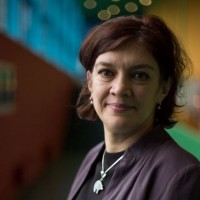
Academic Staff
Dr M.D. Pavel
Dr Pavel has more than 20 year experience in the field of rotorcraft flight dynamics, simulation and handling qualities. She has worked on many GARTEUR projects (Group for Aeronautical Research and Technology in Europe, see www.garteur.org) and projects of the European Union (see for example ARISTOTEL on http://aristotel-project.eu and NITROS on https://www.nitros-ejd.org).
The red line through her research relates to Modelling and simulation of rotorcraft flight dynamics, with application to flight simulators fidelity, rotorcraft stability, handling qualities, flight control and rotorcraft design. During her Ph.D. research she focused on understanding and predicting the level of fidelity needed for rotorcraft flight dynamics modelling, developing guidelines relative to the relevant degrees of freedom that should be considered in the rotorcraft flight mechanics models. These guidelines have been translated into a database of rotorcraft simulation models running from low-level desktop setups to high-fidelity simulators like SIMONA research simulator (SRS) at Delft University, see http://cs.lr.tudelft.nl/simona/ ). The models she developed use physic-based generic math models with adequate assumptions/simplifications. They relate to generic rotorcraft models tested and validated for a multitude of helicopter types (such as BO-105 helicopter, Apache AH-64 helicopter, UH-60 helicopter, coaxial helicopter, tandem Chinook CH-47 helicopter, tiltrotor) in a multitude of scenarios (from simple mission task elements such as hovering task to elaborate scenarios such as landing a helicopter on a deck ship). These models can be selected from low-fidelity to high-fidelity modelling and can be applied according to the problem analysed – ex. ascertain the vehicle’s performance, simulate manoeuvring flight, determine the vehicle’s response to different external perturbations, design flight control systems). The customized-modelling simulations she developed for rotorcraft have the advantage of providing insight into the physics of the specific problem analysed. Without a proper understanding of the physical mechanisms involved in rotorcraft modelling there is a real danger of rotorcraft unsafe behaviour in practice and wrong solutions when designing/modifying new rotorcraft configurations.

